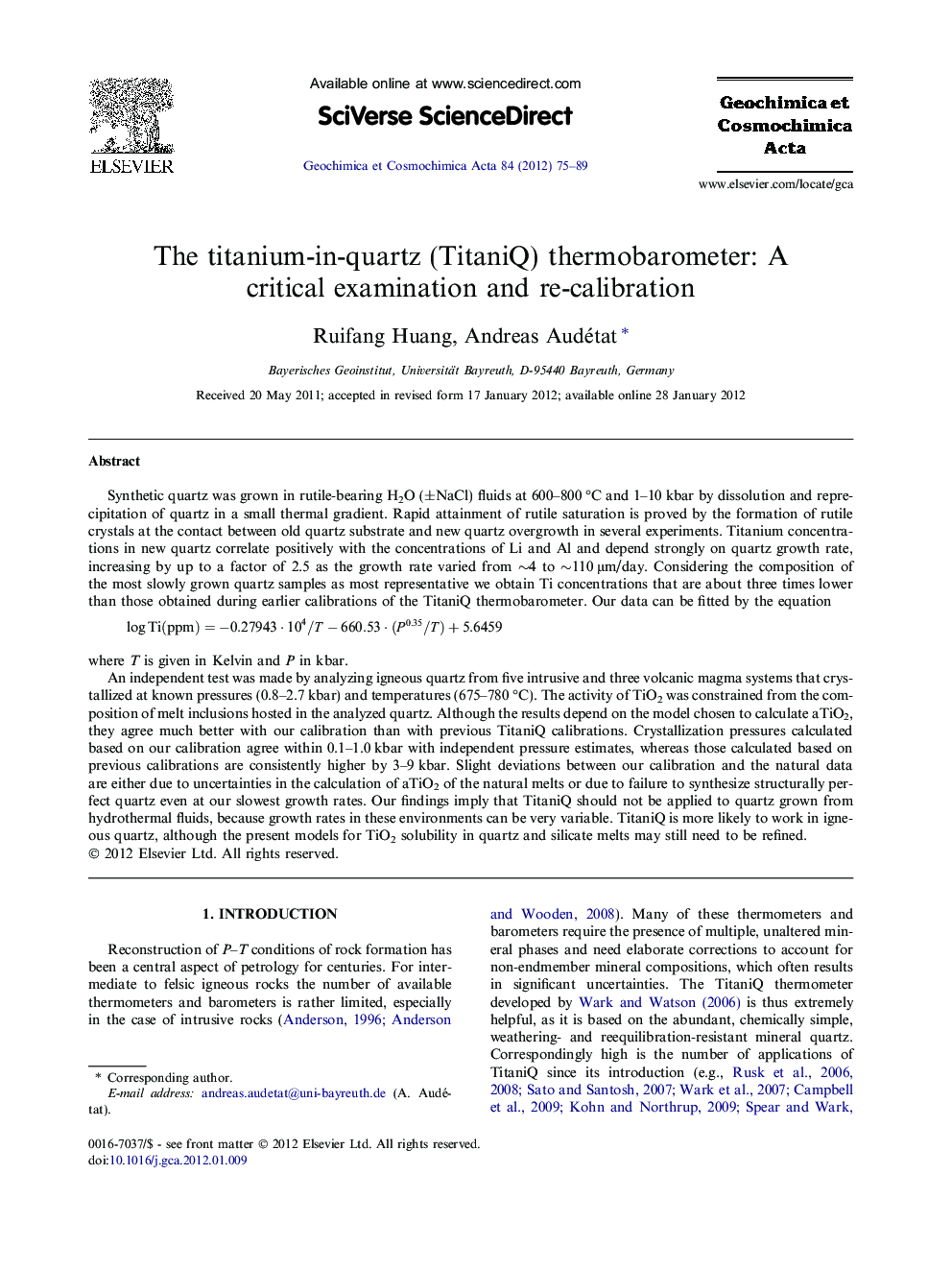| کد مقاله | کد نشریه | سال انتشار | مقاله انگلیسی | نسخه تمام متن |
|---|---|---|---|---|
| 4702935 | 1638073 | 2012 | 15 صفحه PDF | دانلود رایگان |

Synthetic quartz was grown in rutile-bearing H2O (±NaCl) fluids at 600–800 °C and 1–10 kbar by dissolution and reprecipitation of quartz in a small thermal gradient. Rapid attainment of rutile saturation is proved by the formation of rutile crystals at the contact between old quartz substrate and new quartz overgrowth in several experiments. Titanium concentrations in new quartz correlate positively with the concentrations of Li and Al and depend strongly on quartz growth rate, increasing by up to a factor of 2.5 as the growth rate varied from ∼4 to ∼110 μm/day. Considering the composition of the most slowly grown quartz samples as most representative we obtain Ti concentrations that are about three times lower than those obtained during earlier calibrations of the TitaniQ thermobarometer. Our data can be fitted by the equation logTi(ppm)=-0.27943·104/T-660.53·(P0.35/T)+5.6459logTi(ppm)=-0.27943·104/T-660.53·(P0.35/T)+5.6459 where T is given in Kelvin and P in kbar.An independent test was made by analyzing igneous quartz from five intrusive and three volcanic magma systems that crystallized at known pressures (0.8–2.7 kbar) and temperatures (675–780 °C). The activity of TiO2 was constrained from the composition of melt inclusions hosted in the analyzed quartz. Although the results depend on the model chosen to calculate aTiO2, they agree much better with our calibration than with previous TitaniQ calibrations. Crystallization pressures calculated based on our calibration agree within 0.1–1.0 kbar with independent pressure estimates, whereas those calculated based on previous calibrations are consistently higher by 3–9 kbar. Slight deviations between our calibration and the natural data are either due to uncertainties in the calculation of aTiO2 of the natural melts or due to failure to synthesize structurally perfect quartz even at our slowest growth rates. Our findings imply that TitaniQ should not be applied to quartz grown from hydrothermal fluids, because growth rates in these environments can be very variable. TitaniQ is more likely to work in igneous quartz, although the present models for TiO2 solubility in quartz and silicate melts may still need to be refined.
Journal: Geochimica et Cosmochimica Acta - Volume 84, 1 May 2012, Pages 75–89